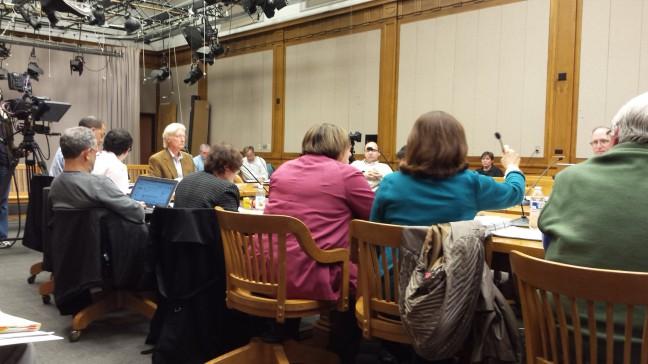The city of Madison is seeking to bring down the price tag for the Judge Doyle Square project after hearing concerns over the past few months about the project’s costs.
The Madison Board of Estimates on Monday heard plans for a new, smaller version of the Judge Doyle Square project that would include a smaller hotel and more parking spaces. The project was discussed alongside Mayor Paul Soglin’s 2015 operating budget proposal.
Alders had criticized the level of public spending on the project in recent months, before they tasked the developer to explore whether or not the Judge Doyle Square project could be scaled back to involve less city funding.
Mayor Soglin said he would like to see an urban mixed-use hotel, featuring restaurants and other businesses as part of the development, instead of a traditional, limited-service or full-service hotel.
“Based on our previous conversations and my previous opinions, I would not support a limited-service hotel,” Soglin said.
Mayor Soglin said he believes the mixed-use model is the best of the three models going forward, since it’s “where the market is going.”
The new proposal would reduce the number of rooms in the hotel to 200 or 250, remove some civic and meeting space, and add additional parking spaces.
Police chief seeks more neighborhood resource officers
The board also heard Soglin’s proposals for how much the city should spend on the Madison Police Department.
Police Chief Mike Koval’s is seeking an increase in funding to add five additional neighborhood resource officers to the city and adding to the department’s mental health outreach initiative.
But Mayor Soglin’s current budget proposal provides funding for two of the five officers, so Koval pushed for funding for the other three.
“Madison is a city of neighborhoods,” Koval said. “While we have over 120 vibrant neighborhoods, the fact is … it became self-evident that some of our neighborhoods are in a period of transition.”
Koval said he values the neighborhood officers so much he would replace traditional officers with neighborhood resource officers if forced to choose between the two.
The neighborhood resource officers are assigned to a specific neighborhood, as opposed to the traditional officers who patrol sections of a district or the entire district itself.
The city currently has 11 neighborhood resource officers, down from the 18 officers the city had at the program’s height, Koval said.
If funding for all five officers is approved, the new officers would begin training in the fall of 2015, and would be on the street in June 2016, he said.
Koval also highlighted the need for additional police resources dedicated to mental health issues.
Addressing mental health needs proactively and treating people humanely would help cut down on some of the mental health-related calls the department gets, Koval said.
Since 2013, the Madison Police Department took more than 2,500 calls related to mental health, Koval said.
Koval said other priorities for him include getting caught up on open records requests and adding a third assistant police chief.


